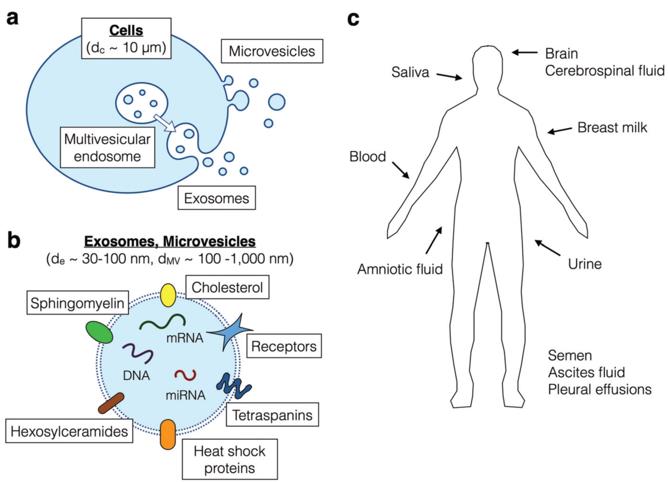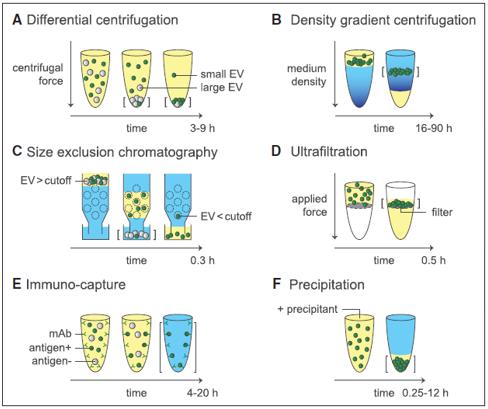- You are here: Home
- Services
- Exosome Research Services
- Exosome Isolation and Purification
Services
-
Cell Services
- Cell Line Authentication
- Cell Surface Marker Validation Service
-
Cell Line Testing and Assays
- Toxicology Assay
- Drug-Resistant Cell Models
- Cell Viability Assays
- Cell Proliferation Assays
- Cell Migration Assays
- Soft Agar Colony Formation Assay Service
- SRB Assay
- Cell Apoptosis Assays
- Cell Cycle Assays
- Cell Angiogenesis Assays
- DNA/RNA Extraction
- Custom Cell & Tissue Lysate Service
- Cellular Phosphorylation Assays
- Stability Testing
- Sterility Testing
- Endotoxin Detection and Removal
- Phagocytosis Assays
- Cell-Based Screening and Profiling Services
- 3D-Based Services
- Custom Cell Services
- Cell-based LNP Evaluation
-
Stem Cell Research
- iPSC Generation
- iPSC Characterization
-
iPSC Differentiation
- Neural Stem Cells Differentiation Service from iPSC
- Astrocyte Differentiation Service from iPSC
- Retinal Pigment Epithelium (RPE) Differentiation Service from iPSC
- Cardiomyocyte Differentiation Service from iPSC
- T Cell, NK Cell Differentiation Service from iPSC
- Hepatocyte Differentiation Service from iPSC
- Beta Cell Differentiation Service from iPSC
- Brain Organoid Differentiation Service from iPSC
- Cardiac Organoid Differentiation Service from iPSC
- Kidney Organoid Differentiation Service from iPSC
- GABAnergic Neuron Differentiation Service from iPSC
- Undifferentiated iPSC Detection
- iPSC Gene Editing
- iPSC Expanding Service
- MSC Services
- Stem Cell Assay Development and Screening
- Cell Immortalization
-
ISH/FISH Services
- In Situ Hybridization (ISH) & RNAscope Service
- Fluorescent In Situ Hybridization
- FISH Probe Design, Synthesis and Testing Service
-
FISH Applications
- Multicolor FISH (M-FISH) Analysis
- Chromosome Analysis of ES and iPS Cells
- RNA FISH in Plant Service
- Mouse Model and PDX Analysis (FISH)
- Cell Transplantation Analysis (FISH)
- In Situ Detection of CAR-T Cells & Oncolytic Viruses
- CAR-T/CAR-NK Target Assessment Service (ISH)
- ImmunoFISH Analysis (FISH+IHC)
- Splice Variant Analysis (FISH)
- Telomere Length Analysis (Q-FISH)
- Telomere Length Analysis (qPCR assay)
- FISH Analysis of Microorganisms
- Neoplasms FISH Analysis
- CARD-FISH for Environmental Microorganisms (FISH)
- FISH Quality Control Services
- QuantiGene Plex Assay
- Circulating Tumor Cell (CTC) FISH
- mtRNA Analysis (FISH)
- In Situ Detection of Chemokines/Cytokines
- In Situ Detection of Virus
- Transgene Mapping (FISH)
- Transgene Mapping (Locus Amplification & Sequencing)
- Stable Cell Line Genetic Stability Testing
- Genetic Stability Testing (Locus Amplification & Sequencing + ddPCR)
- Clonality Analysis Service (FISH)
- Karyotyping (G-banded) Service
- Animal Chromosome Analysis (G-banded) Service
- I-FISH Service
- AAV Biodistribution Analysis (RNA ISH)
- Molecular Karyotyping (aCGH)
- Droplet Digital PCR (ddPCR) Service
- Digital ISH Image Quantification and Statistical Analysis
- SCE (Sister Chromatid Exchange) Analysis
- Biosample Services
- Histology Services
- Exosome Research Services
- In Vitro DMPK Services
-
In Vivo DMPK Services
- Pharmacokinetic and Toxicokinetic
- PK/PD Biomarker Analysis
- Bioavailability and Bioequivalence
- Bioanalytical Package
- Metabolite Profiling and Identification
- In Vivo Toxicity Study
- Mass Balance, Excretion and Expired Air Collection
- Administration Routes and Biofluid Sampling
- Quantitative Tissue Distribution
- Target Tissue Exposure
- In Vivo Blood-Brain-Barrier Assay
- Drug Toxicity Services
Exosome Isolation and Purification
Exosomes are small extracellular vesicles and present in almost all types of body fluids. They can be loaded with various materials such as proteins, RNAs and DNA, therefore they are crucial for cell-cell communication by transmitting signals to regulate diverse cellular functions in recipient cells present at particular sites. They can also exert a significant impact on the development of disease processes. Recently, exosomes are becoming a hot topic for research, especially in the fields of disease diagnosis, prognosis, therapy, and biomarker discovery. The isolation and purification of exosomes from biological fluids is a prerequisite step in exosome research. High purity of exosomes is still technically challenging to achieve which can affect the outcome.
 Figure 1 a. The biogenesis of exosomes and microvesicles from cells. b. A schematic showing the contents of exosomes and microvesicles. c. A cartoon showing the distribution of circulating exosomes and microvesicles in non-invasively obtainable clinical samples.
Figure 1 a. The biogenesis of exosomes and microvesicles from cells. b. A schematic showing the contents of exosomes and microvesicles. c. A cartoon showing the distribution of circulating exosomes and microvesicles in non-invasively obtainable clinical samples.
Different biophysical and biochemical properties can be adapted to isolate exosomes, including size, mass density, shape, charge, and antigen exposure. The principles of the most common isolation methods are presented below.
 Figure 2 Working principle of common methods to isolate extracellular vesicles (EVs).
Figure 2 Working principle of common methods to isolate extracellular vesicles (EVs).
Creative Bioarray provides reliable techniques for exosome isolation from different sample matrices. We also provide exosome isolation using specified techniques if required by customers. We will perform QC assays to ensure the integrity and purity of the isolated materials.
Creative Bioarray provides exosome isolation and purification services, including but not limited to:
- Intact exosome isolation (from plasma, serum, cell culture medium, urine, saliva or other biofluids)
Our various isolation techniques enable easy, fast and efficient enrichment of intact exosomes from multiple types of body fluids following your special requirement.
- Exosome RNA isolation
The total RNA (including small RNA fraction) from exosomes is purified to meet your experimental needs.
- Exosome proteins isolation
- Exosome miRNA isolation
- Exosome DNA isolation
- Other exosome species
Creative Bioarray's Exosome Isolation and Identification services deliver our clients high-quality, intact and functional exosomes from various biofluids with our extensive knowledge and working experience in this field. If you have any special needs or questions regarding our services, please feel free to contact us. We look forward to working with you in the future.
References
- Ko, J.; et al. Detection and isolation of circulating exosomes and microvesicles for cancer monitoring and diagnostics using micro-/nano-based devices. Analyst. 2016, 141(2): 450-60.
- Sunkara, V.; et al. Emerging techniques in the isolation and characterization of extracellular vesicles and their roles in cancer diagnostics and prognostics. Analyst. 2016, 141(2): 371-381.
- Coumans F.A.W.; et al. Methodological guidelines to study extracellular vesicles. Circ Res. 2017, 120(10): 1632-1648.
Explore Other Options
For research use only. Not for any other purpose.

